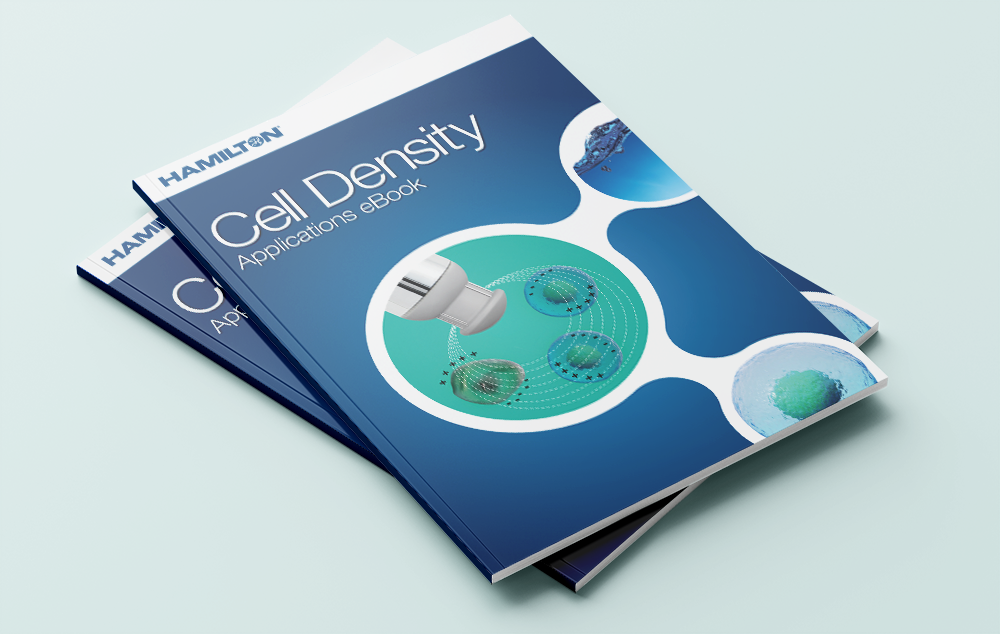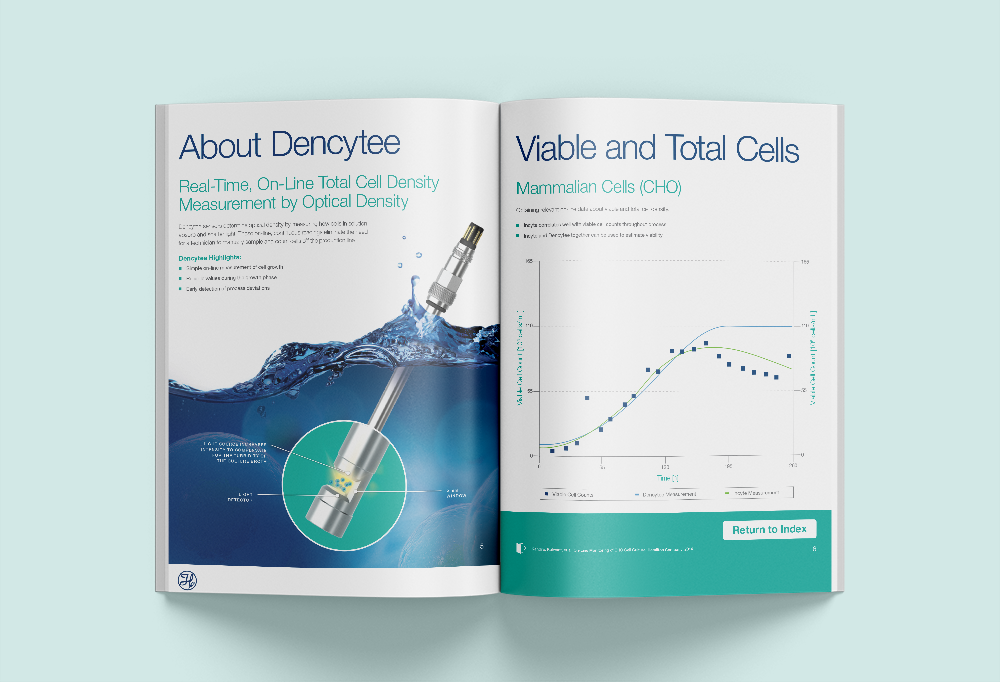Hamilton's in-line cell density sensors have found application in various customer scenarios, spanning from feed control to continuous processing.
This eBook offers a concise compilation of pertinent data and references to published research that utilized these sensors.
Download the eBook

Innovative Approaches to Enhance and Simplify Cell Density Monitoring
Traditional cell density measurement and monitoring can be rather time-consuming and labor-intensive. Additionally, they lack real-time, continuous data and rely on assumptions drawn from offline sampling and manual cell counting.
Hamilton Process Analytics, however, has transformed and modernized this procedure. Instead of directly counting the cells, Hamilton sensors employ permittivity measurement (capacitance per area) and light absorbance, which correspond to the cell count in the solution on the production line. This improvement saves time
and allows for advanced process control.
The subsequent pages delve into concrete applications of these sensors and measurement principles, demonstrating the advantages and opportunities presented by this technological shift.

Download the eBook

This information has been sourced, reviewed, and adapted from materials provided by Hamilton Company.
For more information on this source, please visit Hamilton Company.